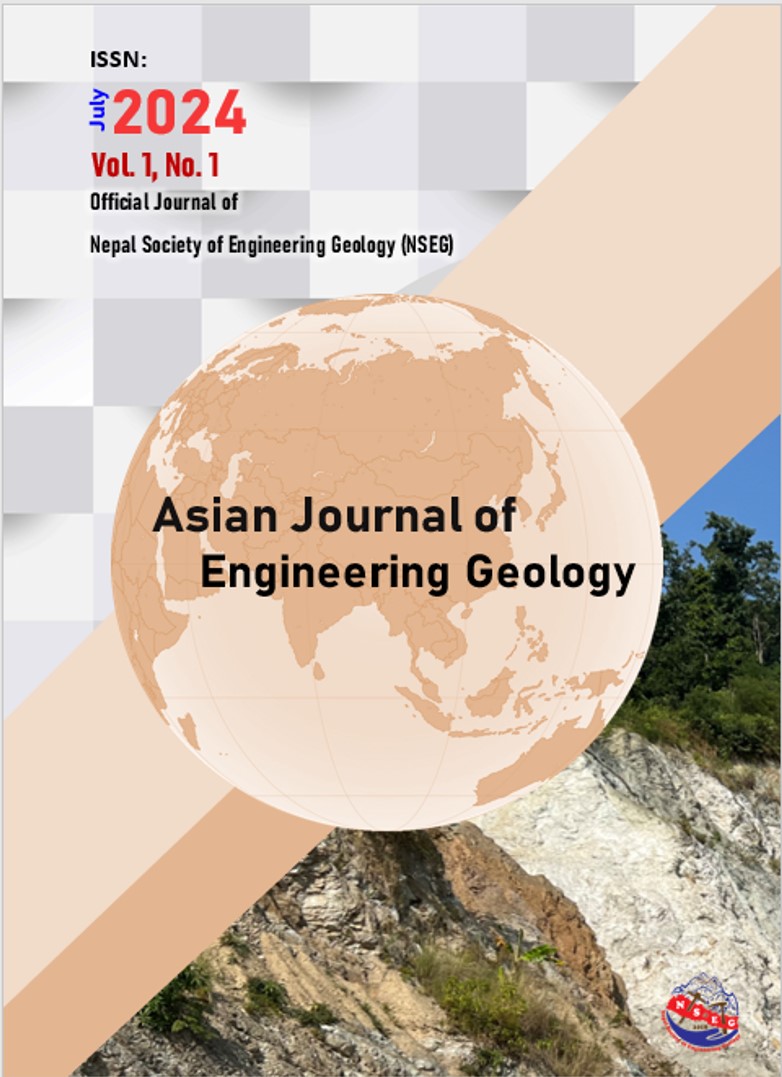Numerical Modeling of Debris Flow Originating from Topographic Hollows at Koyalghari and Simaltal Area along Narayangadh-Mugling Highway
Keywords:
Physical based modelling, Cohens Kappa, Debris flow runout, LISEM modelAbstract
Assessing debris flow runout is essential for evaluating landslide hazards and developing effective land use plans. This study used the LISEM (Limburg Soil Erosion Model) to analyze debris flow runout based on geotechnical soil parameters. By integrating rainfall-induced failure and runout through physically-based modeling, the study aimed to predict landslide impact areas using forecasted precipitation. Focusing on the Koyalghari and Simaltal areas along the Narayangadh-Muglin road, the model's validation in Simaltal showed substantial agreement with historical runout patterns. For extreme rainfall events, debris flow heights between 0.92 m and 1.1 m were estimated at the highway, indicating potential damage to traffic. The findings highlight the model's reliability in predicting debris flow runout and providing valuable insights for hazard management.
References
Bout B., Lombardo L., van Westen C. J. and Jetten V. G. (2018). Integration of two-phase solid fluid equations in a catchment model for flashfloods, debris flows and shallow slope failures: Environmental modelling and software, 105, 1-16.
Dahal R. K. and Hasegawa S. (2008). Representative rainfall thresholds for landslides in the Nepal Himalaya: Geomorphology, 100(3-4), 429-443.
Downloads
Published
Issue
Section
License
Copyright (c) 2024 Nepal Society of Engineering Geology (NSEG)

This work is licensed under a Creative Commons Attribution 4.0 International License.




